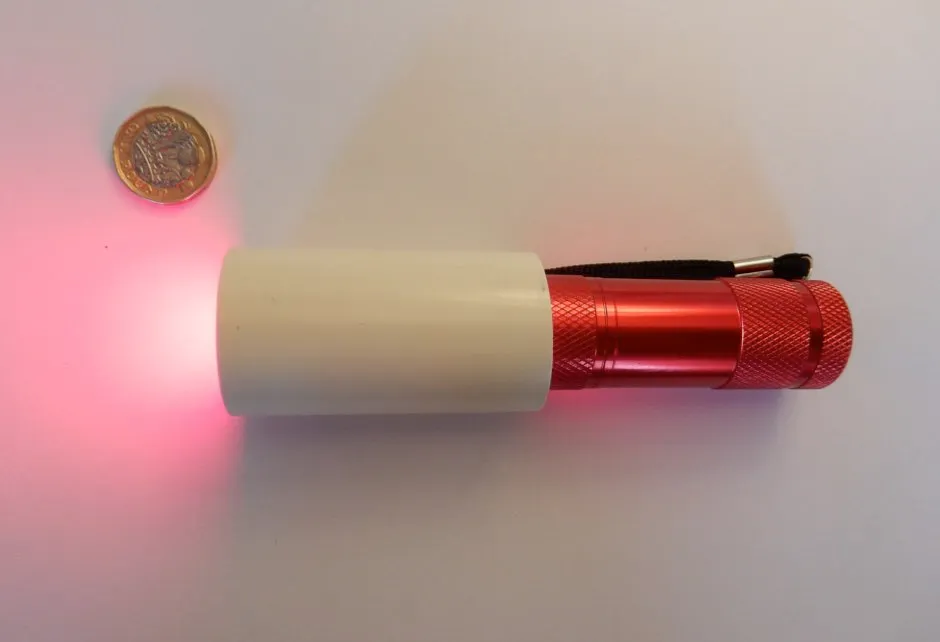A small LED torch that emits deep red light and costs just £12 to make could help improve declining eyesight, scientists have said.
A study by University College London, involving a small sample size of 24 people, has shown that staring at long wavelength light for three minutes every day can “significantly improve vision” in those aged 40 and above.
Scientists believe the discovery, published in The Journals of Gerontology, could pave the way for new eye therapies that are affordable and can be done by the patient at home.
See more eyesight research:
- Car fumes increase the risk of age-related eyesight decline
- Blind mice see again thanks to altered skin cells
- 3D printing technology brings bionic eye one step closer
Cells in the retina of the eye begin to deteriorate at around 40 years of age.
According to the researchers, the pace of this ageing is caused partly by a decline in the cell’s mitochondria, whose role is to produce energy and boost cell function.
Lead author Professor Glen Jeffery, of the UCL Institute of Ophthalmology, said: “As you age, your visual system declines significantly, particularly once over 40.
“Your retinal sensitivity and your colour vision are both gradually undermined, and with an ageing population, this is an increasingly important issue.
“To try to stem or reverse this decline, we sought to reboot the retina’s ageing cells with short bursts of longwave light.”

The researchers recruited 24 people, aged between 28 and 72, who had no ocular disease to take part in their study.
The participants were given special LED torches to take home and were asked to gaze into its deep red 670nm light beam for three minutes a day for two weeks.
They were then retested for colour vision as well as for vision at low light levels.
The ability to detect colours improved by up to 20 per cent in some people aged around 40 and over, the researchers said.
The ability to see in low light also improved significantly within the same age group, they added, although the improvements were not as dramatic as the gains seen in colour vision.
The effect was not seen in younger individuals who were aged below 40.
Read more innovative uses of light:
- Lexilight: a reading lamp designed for dyslexia
- Far-UVC light could be used against coronavirus without harming people
- Flashing blue lights switch on cancer-fighting cells
Prof Jeffery said: “Our study shows that it is possible to significantly improve vision that has declined in aged individuals using simple brief exposures to light wavelengths that recharge the energy system that has declined in the retina cells, rather like recharging a battery.
“The technology is simple and very safe, using a deep red light of a specific wavelength, that is absorbed by mitochondria in the retina that supply energy for cellular function.
“Our devices cost about £12 to make, so the technology is highly accessible to members of the public.”
Reader Q&A: Can you really go blind by staring at the Sun?
Asked by: Steven A Collins, by email
It’s possible, but the hazard is often exaggerated. Even at midday, a normal eye will only let in enough light to heat the retina by about 4°C. You need at least 10°C to cause thermal damage.
Looking at the Sun during an eclipse for more than a minute can cause damage, because your pupils are more dilated, but it doesn’t result in total blindness and isn’t usually permanent.
If the Sun is within 10 minutes of setting below a sea-level horizon, the more dangerous short-wavelength light is absorbed by the atmosphere and it should be quite safe to look at the Sun.
Read more:
